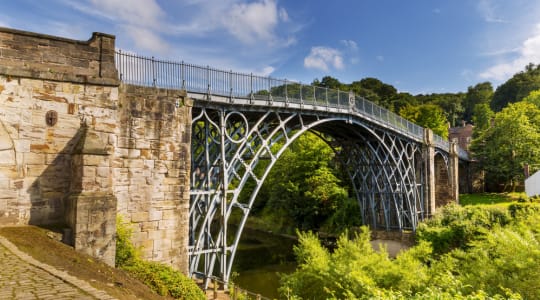
Ironbridge Gorge is a UNESCO World Heritage Site located in Shropshire, England. It is an area of great historical importance, known for its significant role in the Industrial Revolution of the late 18th and early 19th centuries. The gorge is named after the Iron Bridge, a cast iron bridge that spans the River Severn and was the world's first iron bridge.
The area surrounding the gorge is rich in natural resources, including iron ore, coal, and limestone, which made it an ideal location for ironworking. The first blast furnace in the area was built in 1709, and by the mid-18th century, the Ironbridge Gorge was the most important iron-producing region in the world.
The Ironbridge Gorge is home to many museums and historical sites, including the Ironbridge Gorge Museum Trust, which operates ten different museums within the area. These museums cover a wide range of topics related to the Industrial Revolution, including the history of ironworking, coal mining, and pottery making.
Other attractions in the area include Blists Hill Victorian Town, a living history museum where visitors can experience life in a Victorian-era town, and the Tar Tunnel, a tunnel carved through the hillside that was used to extract natural bitumen.
Overall, the Ironbridge Gorge is a fascinating destination for anyone interested in the history of the Industrial Revolution and the role it played in shaping modern society.
Explore Near Ironbridge gorge
Discover 5 attractions, 5 cities, and 1 airport within 75km. Perfect for planning day trips, finding connecting flights, or discovering new destinations to explore during your visit.
Nearby Attractions & Places to Visit
5 destinations within 11.1km - 41.8km from your location





Nearby Cities Worth Exploring
5 destinations within 5.8km - 29.8km from your location
Airports Near Ironbridge gorge
1 destination within 52.6km from your location
Cross-Border Adventures Near Ironbridge gorge
Discover cross-border adventures near Ironbridge gorge. Explore neighboring countries with similar attractions and extend your travel experience across borders.
